Episode 4 – Yala National Park

TERROR AT THE PARK
This incident I am about to tell you occurredon the 15th of October 2007. I waseleven years into my career, having started out in 1996 as a Wildlife Guide, and now a Second-GradeRanger stationed atthe ‘Palatupana’ center atYala National Park.
Every year, it is conventional practice to close Yala National Park to the public from the 1st of September to the 15th of October due to the drought season. Yet, officials are kept busy with themaintenance of ponds and roads, renovations and refurbishments of the several tourist bungalows situated in the park and conducting raids for poachers and other no-do-wells.
Since the park was to be reopened to the public the following day, we left Palatupanacenter to restock the tourist bungalows. We set out on a ‘Land Rover Defender’, numbered 57-1462, as a small posse of five, consisting of Ranger Mr. AsankaGunawardana, Wildlife Guard Mr. MahendraGamage, Finance Assistant Mr. B. M. J. Lakmal, Driver Mr. H. A. P. Chandana, and myself.
We stopped by the ‘MahaSeelawa’ tourist bungalow and the ‘NawaButhawa’ tourist bungalow and finally set out for the ‘Thalgasmankada” tourist bungalow.At around 6:00 p.m., we were nearing our destination, having justpassed by the tank known as ‘DarshanaWewa’ (also known as ‘KotaBediWewa’), when we got word of a probable ambushat the bungalow by insurgents of the ‘LTTE’ (Liberation Tigers of Tamil Ealam).
As soon as we turned the vehicle around to flee, we were peppered with a barrage of gunfire, followed by indistinguishable shouting from both us and our attackers. As myeyes adjusted to the creeping darkness around the thick forest, I was able to determine the obscure outlines of about 10 –12 militants. Fortunately, we were able to reach the center office despite the gunfire. We got out of the Rover to find 13 bullet holes in the vehicle, but every one of us was alive and had managed to escape without any serious bodily harm.
Our relief in escaping a sure death was soured as we received information of the militants having murdered eight soldiers. They had also burned down the keeper’s house of the ‘Thalmasgankada’ bungalow, but both the keeper, Mr. K. L. Chandrasiri and assistant keeper, Mr. JagathThemiyapala, had managed to escapeby hiding in the dense, dark forest.
We counted our blessings for surviving this traumatic episode,but this attack was one of several the LTTE had executed in the Yala National Park over the years, until the end of the nearly 30-yearlong, brutal civil war in May 2009.
As the war reached itslong-awaited end, I transferred to the legal section of the Colombo head office at the beginning of 2009.To this day, I still count my blessings, forit is nothing short of a miracle that I survived.
Dilip Dilantha Samaranyake
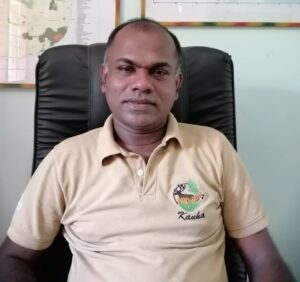
Mr.Dilip Dilantha Samaranayake is currently working as the Park Warden of the Kumana National Park. He has worked in various National Parks in Sri Lanka. Yala, Udawalawe, Lunugamvehera, Wasgamuwa, Legal Division of the Head Office, Walawa Left Bank are some of the places where he has worked.
Mr.Dilip Samaranayake is a loving father of two sons, resides at Wellapitiya, Horana.
Yala National Park
Renowned as a wildlife paradise, Yala National Park is one of the oldest wildlife sanctuaries in Sri Lanka. Although this park with an extent of 126786 hectares is less in size than Wilpattu Park, it is a land rich in biodiversity. Located in the southeastern part of Sri Lanka, Yala National Park is bounded on the north by the Uva Range, on the east and south by the Indian Ocean, on the West by a tributary of the Menik River and on the Kataragama mountain Range. Yala Sanctuary became a National Park on 25th February 1938 under the Fauna and Flora Protection Ordinance.
This national park is divided into five zones for administrative convenience.
Part 1 – 14101Hectares – belongs to Hambantota District.
Part 11 – 9931 Hectares – belongs to Hambantota District.
Part 111 – 40775 Hectares – belongs to Monaragala District.
Part 1V – 26418 Hectares – belongs to Monaragala District.
Part V – 6656 Hectares – belongs to Monaragala District.
In addition to these 5 sections, the Yala Strict Nature Reserve consists of 28905 hectares.
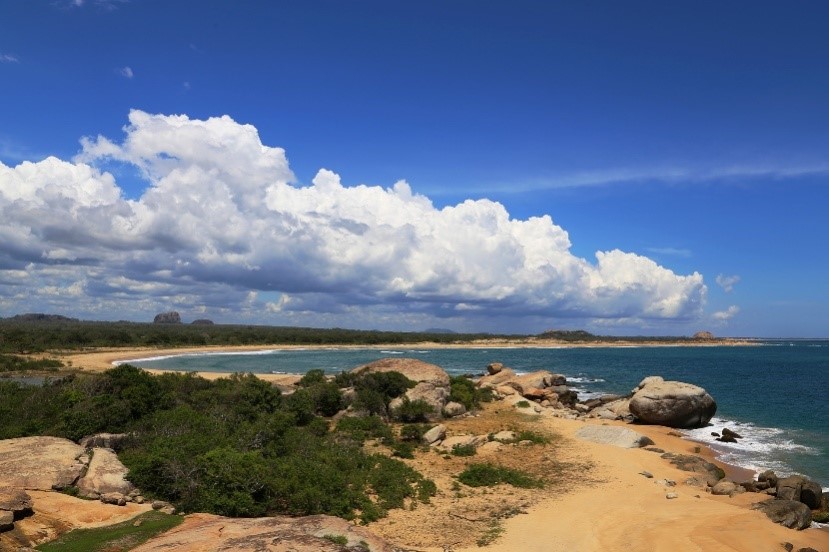
The National Park which is located in two districts has diverse in annual rainfall and in the third, fourth and fifth zones belong to the Monaragala district receive rainfall of 550-775 mm whilst temperature there is 23 to 32 degrees Celsius. The first and second zones of the Hambantota district receive an annual rainfall of 400-500 mm.
The months from May to September are dry months, when the animals run out of water and food. During this time, wildlife is in dire need of rest, and during the peak of the drought, September to October period, the park is closed to visitors.The park is generally known for its wet monsoon and dry monsoon forests and thorn bushes. Ecosystems include freshwater and marine wetlands, mangroves, and marine ecosystems such as coral reefs. Located in the lowest plains of the island, some parts of the park are as high as 100 m to 125 m above sea level. The Menik Ganga and KumbukkanOya, the 11th and 12th longest streams in Sri Lanka, also flow through the Yala Park. Several tanks including VilapalaWewa, GonagalaWewa, MandagalaWewa, UraniyaWewa, MahaseelawaWewa, Heenwewa and KorawakkaWewa are found there.
41 species of mammals, 133 species of endemic birds and 27 species of migratory birds have been recorded in the Yala National Park. Wild elephants, wild buffaloes and spotted deer can be easily spotted here. Wildlife is mostly found in the marine areas of the first zone. Zones 1 and 11 of the park are a leopard paradise.
Bears, sambar, mouse deer, small Indian civet, foxes, wild cats, monkeys and palm civets are some of the other animals that can be seen in this park. Close to the ocean star tortoise,lizards such as the oriental garden lizards, common green forest lizards, and near rivers and streams, salt water and marsh crocodiles can be found.
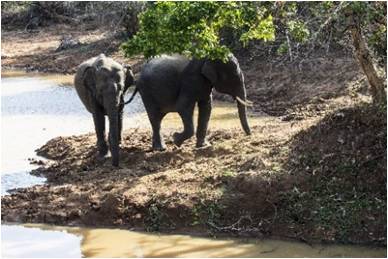
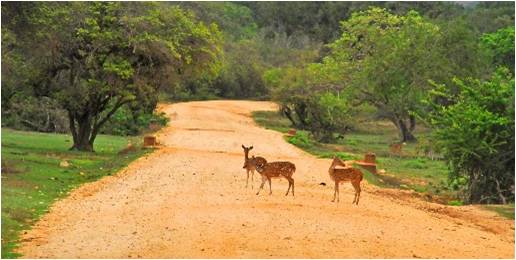
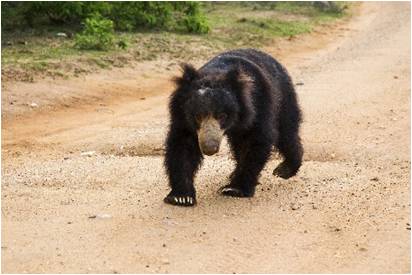
There is no shortage of water in this forest which has an environment conducive to the occasional nesting of migratory birds. There are about 20 lakes and lagoons avail here for aquatic birds and other animals. From September to March of this year of the following year, the migratory birds lodge in the surrounding and nearby sanctuaries.
Some migratory bird species make a permanent home here, such as the Black-necked stork. Black-necked stork is the largest bird among the ‘Top 7 Wild Sri Lanka’ animals published in Sri Lanka.
During the migratory periods, the common sandpipers, forest wagtails, flamingoes, black tailed godwits, Indian pittas, and the golden plovers are found. Spot billed pelican, Ceylon Jungle fowl, Srilankaspur fowl, lesser adjutant, pheasant tailed jacana,woolly necked stork, painted stork and several species of herons, bitterns and egrets can also be seen here.
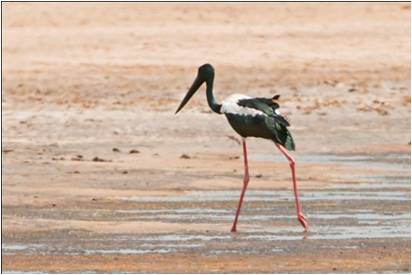
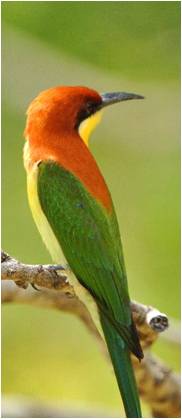
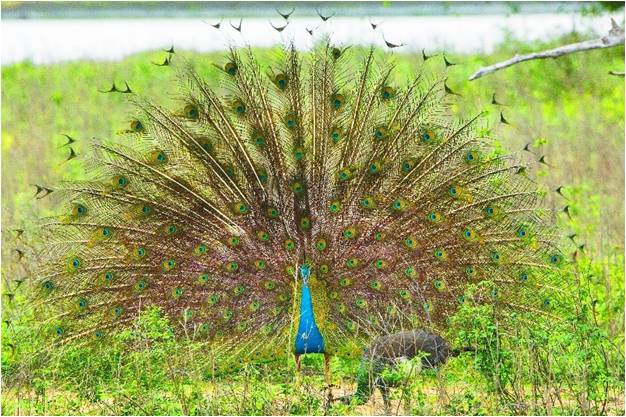
Blue tailed bee eater
Pea cock
The second zone of the park has the least coverage of forest, but all other zones are covered with forests. The flora of Yala Park includes dry or semi-evergreen or thorny forests, wet deciduous forests, mangroves etc. Palu, Veera, Lunuwarana are the predominant plants and Ehela, Ranawara, Kohomba and wood apple plants are also widespread. Other species include Andara, Kukuruman, HeenKaramba, Eraminia, Hirasa, KiriVel, Wild Pichcha and Asparagus. About 300 species of plants have been identified in the first zone of the park alone.
It has been established that there were settlements associated with this forest in the past. The Pothana, Palatupana, Helawa, Okanda areas are villages where people lived in the past. Over time, these settlements became forests and became paradise of wildlife. There is a statue of the lord Buddha in a rock cave at the top of the hill belonging to the MagulMahaVihara near Palatupana. There is also evidence that ancient Buddhist shrines were in a very advanced state at that time, according to ancient pottery ruins, Brahmi script, inscriptions, Buddha statues, etc. Inscriptions related to the reign of King DutuGemunu have been found near the SithulPawwa sacred ground. Pimburagala Kanda, Gona Gala, AkashaChaitya, ViharaGodella, SithulPawwaRajamahaVihara where the Arhat monks lived and the rock caves and MagulVihara are still places of worship within the park. There are many historical stories and legends associated with Yala. Meanwhile, the stories related to Andre are very interesting.
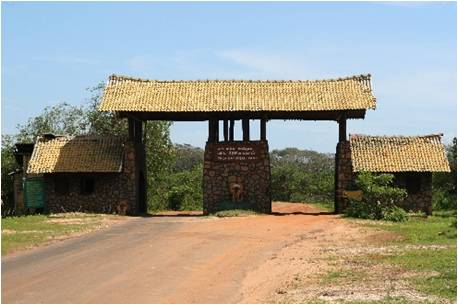
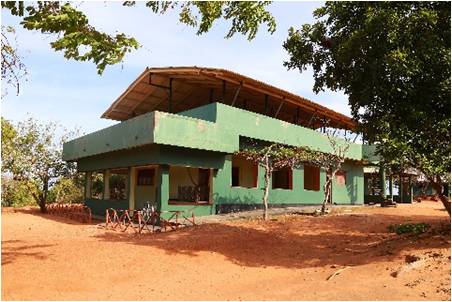
Divided for ease of administration, Yala Park has road facilities for tourists to visit. You have to enter Palatupana to watch the first part of Yala. This park is managed by the Park Headquarters located at Palatupana. 9.5 km from Tissamaharama town on the Colombo-Kataragama main road past Kirinda at the Palatupana main entrance is located . It is about 40 km from Kataragama to Katagamuwa, Sithulpawwa to Palatupana via Bambawa. Tourist lodges with all facilities have been constructed for tourists and accommodation should be reserved from the Department of Wildlife Conservation in Colombo. A tourist information center is also located at the entrance of the Yala National Park and a leopard Observation Center has recently been established in the park.
List of animals in the yala documentary
Sinhala name | Tamil name | English name | Scientific name |
අලියා | யானைகள் | Asian elephant | Elephas maximus |
වලසා | கரடிகள் | Sloth bear | Ursus ursinus |
ගෝනා | மரைகள் | Sambar | Rusa unicolor |
මීමන්නා | சருகு மான்கள் | Mouse deer | Moscheola meminna |
කළවැද්දා | ஆசிய மர நாய்கள் | Palm Civet | Hermophroditus species |
උරලෑවා | புனுகுப் பூனைகள் | Ring tailed civet | Viverid species |
හිවලා | பொன்னிற குள்ள நரிகள் | Golden jackal | Canis aureus |
වල්බළලා | காட்டு பூனைகள் | Jungle cat | Felis chaus |
වඳුරා | குரங்குகள் | Toque monkey | macaca sinica |
ඉත්තෑවා | முள்ளம்பன்றிகள் | Porcupine | Hystrix indica |
තාරකාඉබ්බා | நட்சத்திர ஆமைகள் | Star tortoise | Testudo elegans |
හැලකිඹුලා | சதுப்பு நில முதலை | Mugger crocodile | Crocodylus palustris |
ගැටකිඹුලා | உவர் நீர் முதலை | Estuarine crocodile | Crocodylus porosus |
ගරා කටුස්සා | தோட்டப் பல்லிகள் | Oriental garden lizard | Calotes versicolor |
පලා කටුස්සා | பொதுவான பச்சை வன பல்லி | Common green forest lizard | Calotes calotes |
අලිමානාවා | கருங்கழுத்து நாரை | Black-necked stork | Ephippiorhynchus asiaticus |
කැළෑහැලපෙන්දා | கொட்டிக்கால் வாலாட்டி | Forest wagtail | Dendronanthus indicus |
සියක්කාරයා | பெரும் பூநாரை | Greater flamingo | Phoenicopterus ruber |
අළුපැස්තුඩුවා | சாம்பல் நாரை | Spot-billed pelican | Pelecanus philippensis |
පෙද කළු ගොහොදු විත්තා | கருவால் மூக்கன் | Blak tailed godwit | Limosa limosa |
අවිච්චියා | இந்திய தோட்டக் கள்ளான் | Indian pittah | Pitta brachyura |
බිඟුහරයා | நீலவால் பஞ்சுருட்டான் | Bee eater | Merops species |
මහාරන් ඔලෙවියා | கல்பொறுக்கி | Golden plower | Pulvialis fulva |
පාදිලිමානාවා | வெண்கழுத்து நாரை | Woolly necked stork | Ciconia episcopus |
ලතු වැකියා | மஞ்சள் மூக்குநாரை | Painted stork | Mycteria leucocephala |
කොකා විශේෂ | சாம்பல் நாரைவகை | Heronspecies | Ardea species |
කොකා විශේෂ | பெரிய கொக்கு வகை | Egretspecies | Egretta species |
කොකා විශේෂ | மஞ்சள் குருகு வகை | Bitternspecies | Ixobrychus species |
සැවුල්පෙද දියසෑනා | நீளவால் இலைக் கோழி | Pheasant tailed jacana | Hydrophasianus chirurgus |
බහුරු මානාවා | சிறிய பெரு நாரை | Lesser adjutant | Leptoptilos javanicus |
වළි කුකුලා | இலங்கைக் காட்டுக் கோழி | Ceylon jungle fowl | Gallus lafayetti |
හබන් කුකුලා | சின்னக் காட்டுக் கோழி | Sri Lanka spur fowl | Galloperdix bicalcarata |
සිලිබිල්ලා | பொதுவான புள்ளிச் செங்கால் உள்ளான் | Shanka and Sand pipers | Tringa Species |
List of trees in the yala documentary
Sinhala Names | Tamil Names | English Names | Botanical Name |
පලු | பாலை | Ceylon Iron wood | Manilkara hexandra |
වීර | வீரை | Hedge Boxwood | Drypetes sepiaria |
ලුණුවරණ | மாவிலங்கம் | Crateva adansonii subsp. odora | |
ඇහැල | கொன்றை | Indian Laburnum,Shower of gold | Cassia fistula |
රණවරා | ஆவாரம் | Matara Tea | Senna auriculata (Synonym- Cassia auriculata) |
කොහොඹ | வேப்பம் | Margosa, Neem | Azadirachta indica |
දිවුල් | விலா | Wood apple, Elephant apple | Limonia acidissima |
අන්දර | பனை | – | Many species under family Fabacea |
කුකුරුමාන් | மலை மாதுளை | Spiny randia , Emetic – nut, False Guava | Catunaregam spinosa |
හීන්කරඹ | சிறு கிளா | – | Carissa spinarum |
එරමිනියා | இலந்தை | – | Ziziphus species |
හිරැස්ස | வச்சிரவல்லி | Veld(t) grape | Cissus quadrangularis |
කිරිවැල් | வெண் நுனா | – | Families Apocynacea and Rubiacea species |
වල්පිච්ච | காட்டு மல்லிகை | – | Jasminum species |
හාතවාරිය | சாதாவாரி | – | Asparagus racemosus |
Editor – Dammika Malsinghe, Additional Secretary, Ministry of Wildlife and Forest Conservation (MWFC)
Article on park written by – Hasini Sarathchandra, Chief Media Officer, Department of Wildlife Coservation (DWLC)
Tamil Translations – A.R.F. Rifna, Development Officer, MWFC
English Translations (Documents) – Asoka Palihawadana, Translator, MWFC
English Interpretation (Story) -Thanuka Malsinghe
Web Designing – N.I.Gayathri, Development Officer, MWFC
Photography – Rohitha Gunawardana, Mahesha Chathurani Perera (Graduate Trainee), DWLC